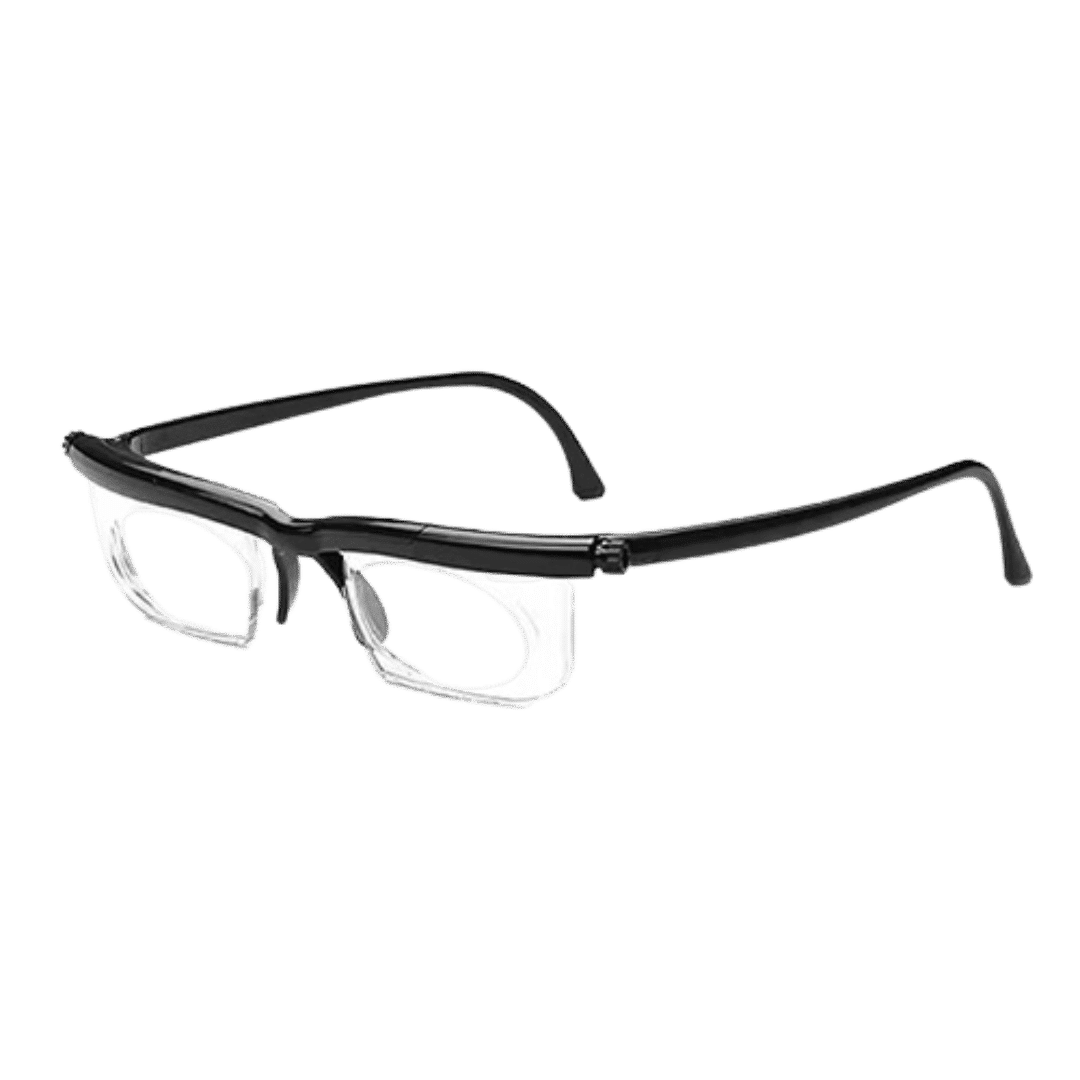As a health professional who spends long hours counseling patients on eye strain, screen hygiene, and age-related vision changes, I’m often skeptical of “one-size-fits-all” vision solutions. Over the past month, I’ve been thoroughly testing Flex Vision Glasses—adjustable-focus eyewear designed to let each eye dial in clarity from near to far—across clinic work, evening reading, and daily errands. I approached them with clinical curiosity and practical expectations. To my surprise, they didn’t just meet the mark; they made several parts of my routine easier, more comfortable, and more efficient.
Table of Contents
First Impressions and Build Quality
Out of the box, the glasses feel lightweight yet sturdy, with a utilitarian design that prioritizes function over fashion. The frames are made from durable materials that hold up well to frequent on-and-off use. The adjustment dials are discreetly integrated and offer good tactile feedback—you feel small “steps” as you turn them, which makes it easy to fine-tune and replicate settings for each eye. As someone who values both ergonomics and hygiene, I appreciated how easy they were to clean; a standard microfiber cloth worked well, and smudges wiped off without fuss. The hinges stayed firm through repeated adjustments, and I never felt like I was risking a crack or misalignment even when dialing focus multiple times a day.

How the Adjustable Focus Works in Real Life
The concept is simple but powerful: each lens adjusts focus independently via a small dial, allowing quick shifts between near tasks (like reading or phone use) and distance tasks (like walking outdoors or checking signage). From a health perspective, this is especially helpful for:
- People with varying needs throughout the day—reading charts at arm’s length, then turning to distance vision when consulting across the room.
- Those who haven’t updated their prescription recently and need a stopgap solution.
- Individuals experiencing presbyopia who don’t want to switch between separate readers and distance glasses.
Practically, I would dial both lenses for crisp near focus during charting or reading labels, then dial back to neutral for distance when moving around. The process takes seconds. After the first few days, I could adjust focus almost instinctively. There’s a small learning curve in finding the “sweet spot” for each eye, but once I learned my typical settings (I jotted down left/right dial positions), it became routine.
Comfort During Long Sessions
I tested these during extended screen sessions and clinic hours. The nose pads and ear pieces distributed weight evenly, preventing the pressure marks I sometimes get from heavier frames. Over a full day, I didn’t experience the temple aches or nasal bridge fatigue that can come from poorly balanced glasses. The lenses did not introduce noticeable color fringing or glare under typical indoor lighting. For nighttime reading, adjusting to slightly stronger near focus reduced squinting and let me maintain a more neutral posture, which is a small but meaningful win for neck and shoulder comfort.
Visual Clarity and Use Cases
Clarity is where Flex Vision surprised me. For near work—reading, phone, labels—the sharpness was excellent after fine-tuning. For intermediate distances—laptops and monitors positioned around 50–70cm—the adjustability shined. I could deliberately set a mid-range focus to reduce accommodation effort and eye strain. For distance, clarity was good enough for general activities like walking or casual TV viewing. While these aren’t a replacement for a personalized prescription in every scenario, they delivered reliable performance across the daily spectrum.
Three standout use cases:
- Clinic tasks: Switching quickly between charting distance and across-the-room discussions without swapping glasses.
- Kitchen and workshop: Reading small print on packaging, then looking up at a wall clock or across the room.
- Travel and errands: Scanning price tags, then reading overhead signage or bus stop indicators minutes later.
Eye Health Considerations
From an eye health perspective, adjustable-focus glasses offer several practical benefits:
- Reduced strain from constant near-to-far accommodation shifts throughout the day.
- A flexible option for individuals who haven’t yet settled on a stable prescription or are between visits.
- A convenient backup for those who occasionally misplace readers or need an “all-in-one” pair nearby.
They’re not a medical substitute for a comprehensive eye exam, and anyone with complex refractive needs (significant astigmatism, notable anisometropia, or ocular pathology) should still prioritize personalized prescriptions. But as a supplemental tool, they fit well into a healthy vision routine—especially for presbyopes, multi-device users, and busy professionals.
Durability and Maintenance
After a month of steady use, the frames remained solid, and the dials retained consistent resistance. No loosening, no rattling. I tossed them in a soft case in my bag repeatedly, and the lenses resisted scratches better than I expected. For maintenance, I recommend:
- Keep a microfiber cloth handy and avoid harsh solvents.
- Store in a soft or hard case when not in use.
- Note your preferred left/right dial positions for quick resets.
Who Will Benefit Most
In my experience, Flex Vision Glasses are especially useful for:
- Adults with presbyopia who alternate between reading and distance frequently.
- Professionals who multitask across near, intermediate, and distance tasks (healthcare, retail, teaching, labs).
- Frequent travelers who want a single pair for planes, menus, and signs.
- Students and creators who move between notebooks, laptops, and whiteboards.
If there’s substantial astigmatism or specialized visual demands (like precision night driving), I’d still keep a tailored prescription on hand. But even then, these are excellent as a backup or task-specific pair.
Downsides and Realistic Expectations
A few measured caveats:
- Fashion-forward users may find the look more utilitarian than stylish.
- There’s a brief learning curve to dialing in settings quickly, especially if left/right needs differ.
- For high-demand visual tasks or complex prescriptions, personalized lenses remain superior.
These aren’t dealbreakers; they’re more about setting appropriate expectations. For most daily tasks, the convenience outweighs the trade-offs.
Value, Convenience, and Final Verdict
From a clinician’s perspective, Flex Vision Glasses fill a genuine gap between single-purpose readers and full prescription eyewear. The ability to customize each eye in seconds is both practical and empowering, reducing friction in everyday vision tasks and cutting down on the “Where are my readers?” routine. Over my test period, I reached for them more often than expected—especially for intermediate-range work where standard readers fall short.
Are they perfect for every scenario? No. Are they a smart, cost-effective, and health-conscious addition to a vision toolkit? Absolutely. Given the durable build, real-world clarity after quick adjustments, and the flexibility to cover near, intermediate, and distance tasks, they deliver strong day-to-day value.

Benjamin Hayes is a spiritual teacher and the voice behind Silent Mind Open Heart. Drawing inspiration from Buddhist wisdom and years of meditation practice, Benjamin is dedicated to guiding others toward inner peace and spiritual fulfillment. Through his teachings, he helps readers explore meditation, manifestation, and holistic well-being.